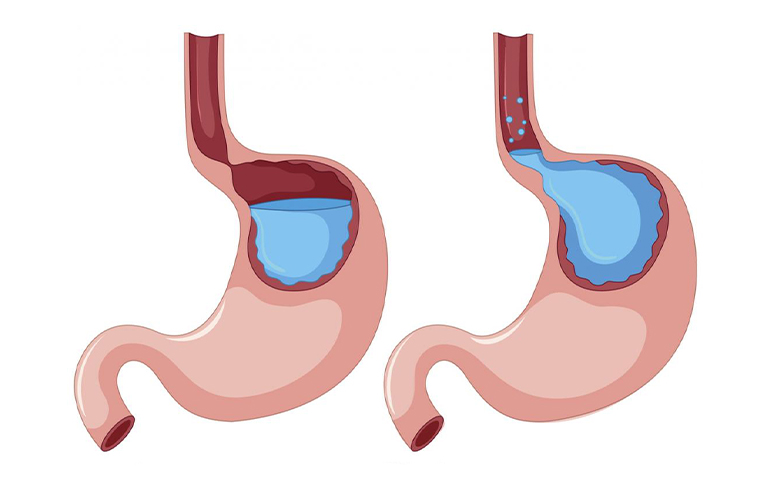
Reflux Disease
Reflux is the problem of stomach contents backing up into the esophagus. Between the stomach and the esophagus there is a valve called the lower esophageal sphincter. This muscular valve prevents acid from escaping back into the esophagus and keeps it in the stomach. Loosening in this area and disruption of the clamp results in reflux.
Since the contents of the stomach are generally acidic, alkaline liquids may escape back into the esophagus due to acid and sometimes bile-pancreatic fluid escaping from the duodenum to the stomach. In this case, chest pain, a feeling of lump in the lower part of the chest, food and stomach liquid coming into the mouth like bitter water, a burning sensation in the throat and painful swallowing may occur.
Although the problem primarily concerns the esophagus, symptoms such as chest pain, cough, asthma, recurrent sinusitis, bad breath, tooth erosion, upper respiratory tract infections, hoarseness, and hiccups may accompany the picture in advanced cases. Patients can apply to otolaryngology and chest diseases clinics with these findings.
The most important reason that triggers reflux is diet. Some foods trigger reflux and the consumption of these foods should be kept under control. Fatty foods directly trigger reflux. Foods that are easy to digest should be preferred instead of fatty and heavy foods. Tomatoes, raw garlic and onions, spicy foods, mint, coffee, tea, cigarettes, alcohol, vinegar, frying, carbonated drinks, canned food, oranges and lemons can also be counted among the main foods that cause reflux. enlargement and herniation of the stomach from there (hiatal hernia).
Diagnosis
Suspicion of the disease is essential for diagnosis. Based on the present complaints, the patient's history and findings, the patient can be diagnosed with reflux. If the above symptoms are seen, the person should definitely consult a doctor and start reflux treatment.
The main diagnostic method is endoscopic examination of the esophagus and stomach. With this examination, the condition of the esophagus and the clamp between the stomach and the esophagus can be evaluated. In cases of prolonged and severe irritation, biopsies may be taken to assess tumor transformation. Apart from endoscopy, pH meters can be used to evaluate the amount and frequency of acid escaping into the esophagus, and manometer measurements can be made to evaluate the clamp pressure between the stomach and esophagus.
How is reflux treated?
At the beginning of the treatment methods are life changes. Practices such as reducing obesity, reducing high-carbohydrate diet, protein-based diet, cutting gas, alcoholic and caffeinated foods, cessation of smoking, feeding at least two hours before bedtime, eating small amounts frequently, raising the head of the bed to the end of the foot, avoiding tight clothes are necessary.
Treatment usually begins with oral medication. Drugs that reduce gastric acidity, increase gastric clamp pressure and accelerate gastric emptying can be used here.
Surgical treatment is required in patients who do not benefit from long-term drug therapy, who have significant hiatal hernia, and who have tissue deterioration leading to cancer due to irritation in the esophagus.
Surgical treatment is laparoscopic hiatal hernia repair and Nissen fundoplication as the gold standard. In this operation, the enlarged hiatus defect is repaired and the fundus part of the stomach is used as a 360-degree dressing to control the leakage at the gastric entrance. Different modifications of fundoplication can also be chosen according to the case (such as Toupet, Dor methods). The most common problem after surgery is temporary swallowing difficulty. It usually resolves spontaneously within a few months.

